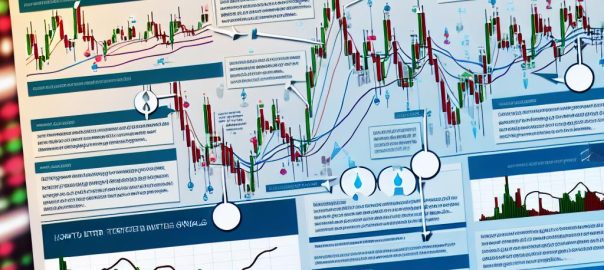How to Avoid Common Mistakes in Binary Options Trading

Understanding the Basics of Binary Options Trading
Binary options trading has emerged as a popular form of financial speculation due to its simplicity and potential for high returns. However, like any other financial instrument, it is important to have a thorough understanding of how it works before getting involved. In binary options, the core mechanism revolves around a basic binary proposition: will a particular asset’s price be above or below a specified level at a predetermined time? Understanding this principle is essential for anyone looking to trade successfully in this market.
Recognizing the Importance of Market Research
When engaging in binary options trading, market research is not merely beneficial—it’s essential. The global markets are influenced by a plethora of factors, from economic indicators and geopolitical events to industry-specific changes. For traders, understanding these factors and how they affect asset prices is crucial to making informed decisions. Relying solely on instincts or intuition can lead to suboptimal outcomes. Engaging with historical data allows traders to identify trends and patterns, while keeping abreast of news events can offer insights into potential future market movements.
-
Managing Risk Effectively
In binary options trading, risk management is not just about protecting capital but also ensuring sustained participation in the market. Ineffective risk management can quickly lead to significant losses. One fundamental principle is to allocate only a small percentage of your trading capital to any single trade, generally within the 1-5% range. This strategy mitigates the risk of substantial losses on a single trade adversely affecting your overall capital. Additionally, implementing a stop-loss strategy serves as a safeguard, preventing losses from escalating beyond acceptable levels. By setting predefined levels where you will exit a trade, you can shield yourself from unexpected market swings.
-
Avoiding Over-trading
Over-trading, or making an excessive number of trades, can lead to poor decision-making and increased risk exposure. This behavior often stems from emotional responses, such as the urge to capitalize on a winning streak or recover from a series of losses. However, emotional trading can cloud judgment and lead to hasty decisions that deviate from one’s established trading plan. For long-term success, it’s vital to adhere to a disciplined approach. Stick to a clearly defined trading strategy that specifies entry and exit criteria and follow it rigorously. This discipline helps neutralize emotional biases and improves trading outcomes.
-
Choosing the Right Broker
Selecting an appropriate broker is a crucial step in ensuring a safe and efficient trading experience. The right broker provides a secure platform for transactions, guarantees fair trading conditions, and ensures the protection of your investments. It’s advisable to choose brokers who are regulated by established financial authorities, as their regulatory oversight ensures adherence to industry standards. Furthermore, evaluating a broker’s transparency in terms of fees and trading conditions can prevent unexpected charges that might erode profits. Make sure to research and compare different brokers before making your final choice.
-
Practicing on a Demo Account
Before risking real capital, utilizing a demo account is a prudent approach. It allows traders to explore the trading platform and experiment with different strategies in a virtual environment. Demo accounts mirror actual market conditions, enabling traders to gain practical experience without the emotional and financial pressures of real trading. By practicing in this risk-free setting, traders can refine their skills and build confidence in their trading strategies. Most brokers provide demo accounts with virtual funds, making it an indispensable tool for both beginners and experienced traders looking to test new approaches.
-
Continuous Learning and Adaptation
The dynamic nature of the binary options market necessitates a commitment to continuous learning and adaptation. Market conditions, trading technologies, and effective strategies are constantly evolving. To remain competitive, traders should engage with ongoing educational opportunities such as courses, webinars, and articles. Staying informed about the latest market trends and developments is critical to maintaining an edge. Furthermore, being willing to adapt and refine trading strategies in response to changing market conditions enhances the prospect of sustained success. Resources such as financial news websites offer valuable insights and guidance for traders seeking to broaden their knowledge and adapt to new circumstances.
In conclusion, approaching binary options trading with a comprehensive understanding of its fundamental concepts, diligent market research, disciplined trading practices, and a commitment to continuous learning can significantly enhance a trader’s potential for success. Whether you are an aspiring trader or an experienced participant, these principles serve as the foundation for navigating the complexities of binary options trading with greater confidence and strategic foresight.



